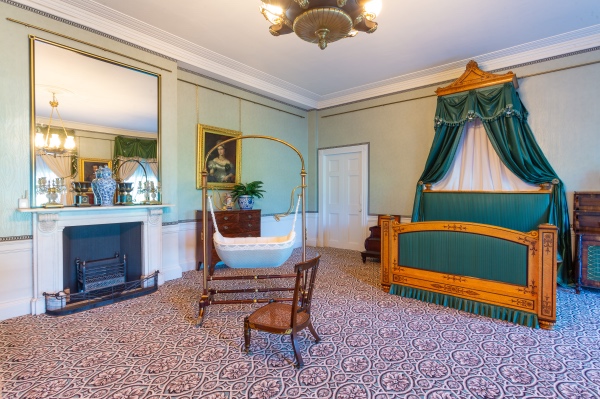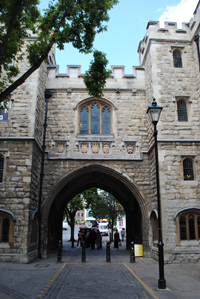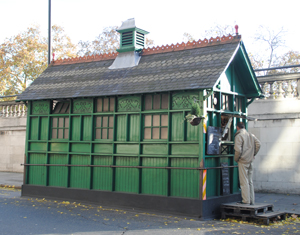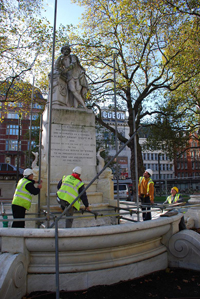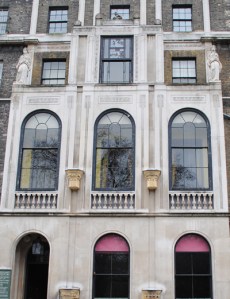Described as the “father of British painting”, 18th century artist William Hogarth bought this property in Chiswick at the height of his fame in 1749.
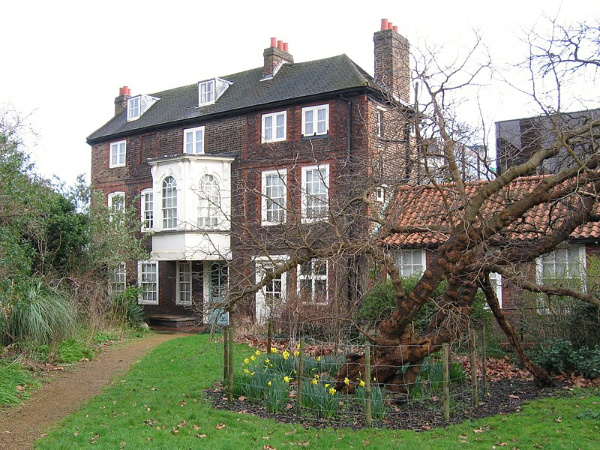
The property, which had been built between 1713 and 1717 and had previously been the country property of a pastor and his family, then located in what was a rural area and served as the Hogarths country home (they had an inner London home in Leicester Fields).
Hogarth extended the home and had a studio installed above a (now lost) coach house in the rear of the garden. As well as his wife Jane, occupants included Hogarth’s sister Anne and his mother-in-law.
Following Hogarth’s death in 1764 (Hogarth, who actually died in the Leicester Fields property, is buried in the nearby St Nicholas Church), Jane continued to live at the property and along with her cousin Mary Lewis, ran a business selling prints of her husband’s works. Mary inherited the house when Jane died in 1789 and remained there until her own death in 1808.
The house, which features three stories and an attic, subsequently passed through various hands including, from 1814 to 1833, Rev Henry Francis Cary, who translated Dante’s Divine Comedy (and counted literary luminaries such as Samuel Taylor Coleridge and Charles Lamb as friends). It was sold for redevelopment in 1901 and, following a failed campaign by artists and writers to buy the house, it was purchased by Chiswick resident, Lieutenant-Colonel Robert William Shipway.
Drawing on the help of the architect Frederick William Peel and Hogarth’s biographer, Henry Austin Dobson, he had the house restored and turned into a museum, installing a collection of the artist’s works and commissioning replica furniture based on images in Hogarth’s prints (he even personally took photographs for a guidebook).
The house opened to the public in 1904 and in 1909 Shipway gave the house to Middlesex County Council. Its ownership passed to Hounslow Council when Middlesex County Council was abolished in 1965.
It was damaged by in September, 1940, during World War II after a parachute mine detonated nearby but was repaired and reopened in 1951. A single storey extension to the property was rebuilt at the time to provide a space for exhibitions.
The now-Grade I-listed property’s interior was refurbished for the tercentenary of Hogarth’s birth in 1997 and again in 2011. A further project in 2020 known as the Mulberry Garden Project – funded by the National Lottery Heritage Fund – added the Weston Studio for learning and activities, but also re-landscaped and reinterpreted the garden to highlight historic planting and themes.
The house and garden are currently managed by London Borough of Hounslow.
Inside, the house continues to show Hogarth’s artistic output including such famous engraving series as A Harlot’s Progress, A Rake’s Progress and Marriage à-la-mode. The house also contains some of the replica furniture commissioned by Shipway.
In the garden is a Mulberry tree believed to be the last survivor of an orchard first established on the site in the 1670s.
There’s a statue of Hogarth and his famous pug dog, Trump, located in Chiswick High Road.
WHERE: Hogarth’s House, Hogarth Lane, Great West Road, Chiswick (nearest Tube station is Turnham Green while nearest Overground is Chiswick Station); WHEN: 12pm to 5pm Tuesday to Sunday and Bank Holiday Mondays; COST: Free; WEBSITE: https://hogarthshouse.org.


